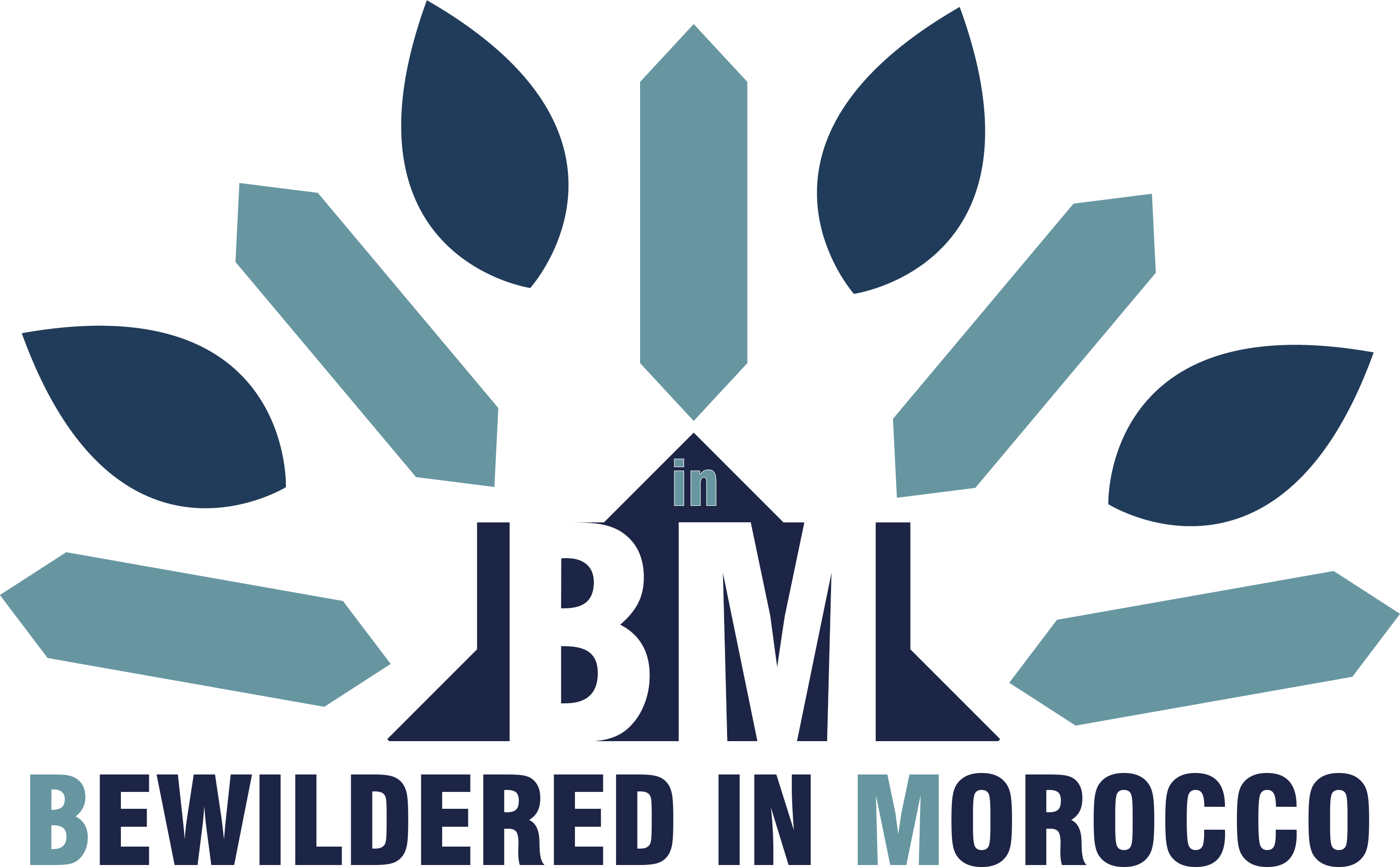The first time I stepped through the entrance of Bahia Palace Marrakech, I thought I'd walked into a dream. The afternoon sun streamed through the stained-glass windows, casting rainbow patterns across the intricate zellige tiles. After living in Morocco for years, I've visited countless riads and palaces, but nothing quite prepared me for the breathtaking beauty of this 19th-century masterpiece.
If you're planning a trip to Marrakech, the Bahia Palace should be at the top of your must-see list. This isn't just another tourist attraction—it's a window into Morocco's rich history, a testament to incredible craftsmanship, and honestly, one of the most Instagram-worthy spots in the Red City.
The Fascinating History Behind Bahia Palace
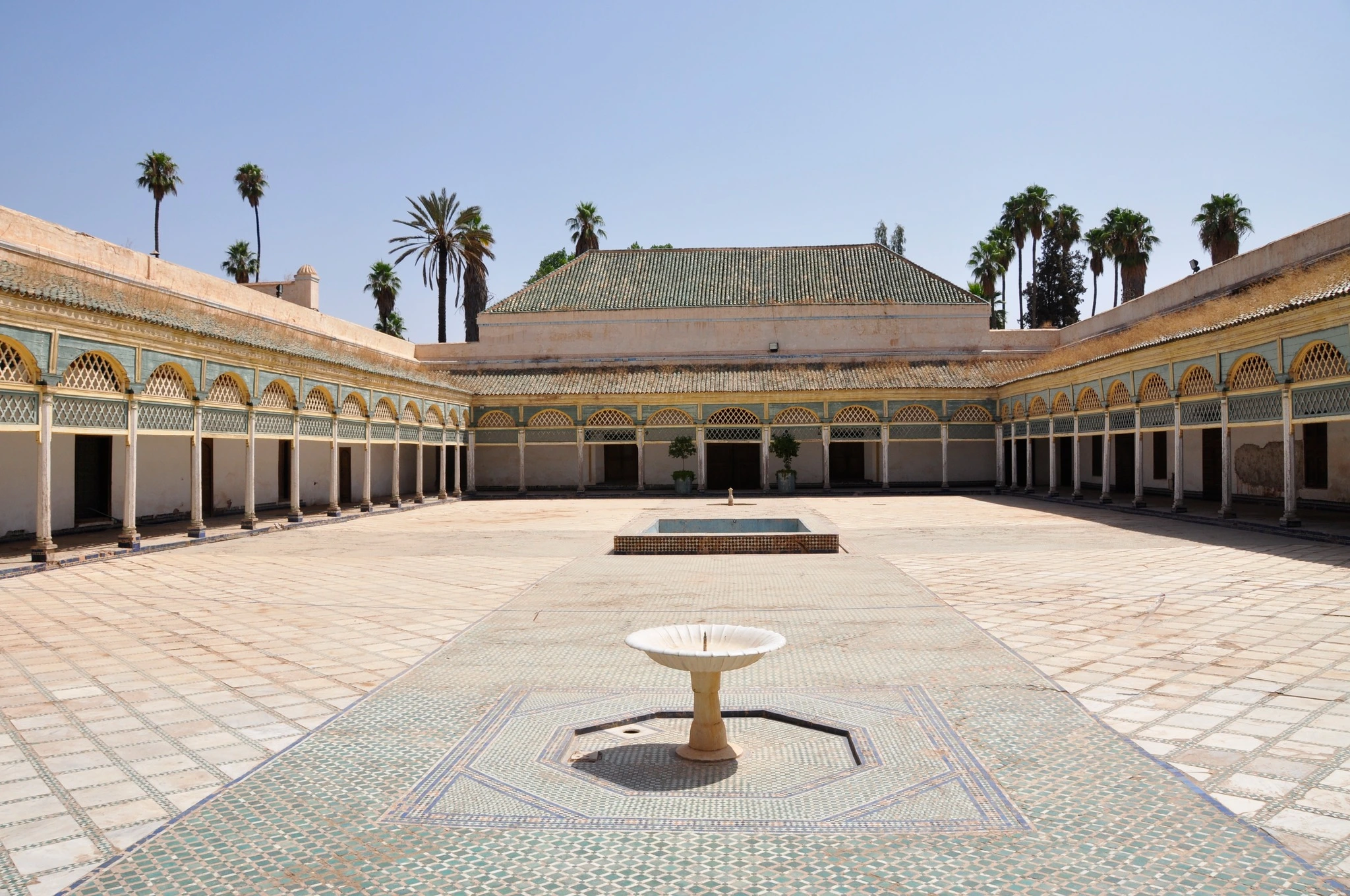
A Former Slave's Rise to Power
The story of Bahia Palace Marrakech reads like something from a historical novel. Built between 1866 and 1867 by Si Moussa, a former slave who rose through the ranks to become Grand Vizier of the Sultan, this palace represents one of the most remarkable success stories in Moroccan history.
But here's where it gets really interesting—Si Moussa's son, Bou Ahmed, inherited the palace and took it to new heights of grandeur. When Bou Ahmed became Grand Vizier in 1894, he expanded the palace dramatically. Why? Well, he needed space for his four wives and 24 concubines! The man clearly knew how to live large.
I remember my guide telling me that Bou Ahmed was so powerful he essentially controlled the entire state until his death in 1900. Walking through those rooms, you can almost feel the weight of that history.
From Palace to Colonial Residence
After Bou Ahmed's death, the palace's story takes a dramatic turn. Legend has it that the palace was ransacked, with all the valuable furniture and artwork being carted away by his wives and even the Sultan himself. This explains why the rooms are empty today—though honestly, the architecture is so stunning that you hardly notice.
When the French established their protectorate in Morocco, they booted out the local inhabitants and installed their Resident General in the palace. The famous writer Edith Wharton even stayed here during this period and wrote about it in her book "In Morocco"—definitely worth a read if you want to dive deeper into the palace's colonial history.
Exploring the Architectural Wonders of Bahia Palace
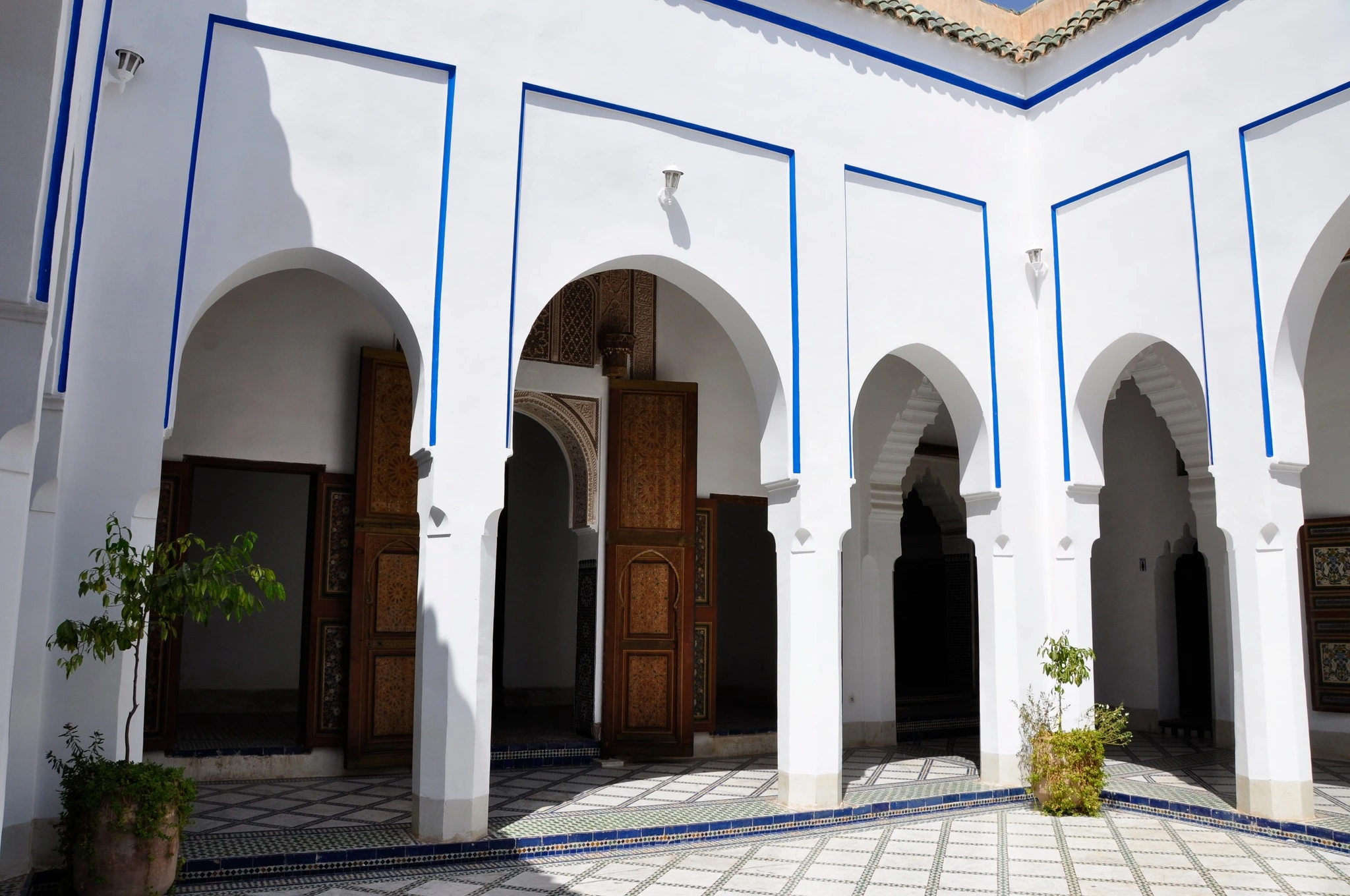
The Petit Riad: Where Intricate Meets Intimate
Your journey through Bahia Palace Marrakech begins at the Petit Riad, closest to the entrance. Don't let the word "petit" fool you—this single-story section is absolutely spectacular. The walls are covered in intensely elaborate white plasterwork inscribed with verses from the Quran.
Here's something that blew my mind: all this intricate plaster was carved in situ while still wet in the 19th century. Can you imagine the skill required to work that quickly and accurately? Every time I visit, I spend ages just staring at the ceiling, trying to wrap my head around the craftsmanship.
The Cour d'Honneur: The Palace's Crown Jewel
If you think the Petit Riad is impressive, wait until you reach the Cour d'Honneur (Court of Honor). This 1,500-square-meter courtyard is hands down the most spectacular open space I've ever seen in Morocco—and trust me, I've seen a lot.
The entire floor is made of Italian Carrara marble, and it was fully restored to its original brilliance in 2018. Standing in the center of this vast marble expanse, surrounded by bright blue and yellow plasterwork, is absolutely magical. This courtyard was converted into a harem by Bou Ahmed, and you can almost picture the lavish life that once unfolded here.
The Grand Riad: Where History Comes Alive
The Grand Riad is actually the oldest part of the palace complex, completed in 1867 by Si Moussa himself. What makes this section special is that it's where Moroccan architectural innovation truly shines. The Bahia Palace was reportedly the first building in North Africa to use stained glass as a decorative feature.
Walking through the Grand Riad's salon, with its carved wood lintels and zouak artistry, I always feel like I'm stepping back in time. The courtyard is filled with fountains and lush foliage, and the sound of birdsong creates the most peaceful atmosphere.
What Makes Bahia Palace Truly Special
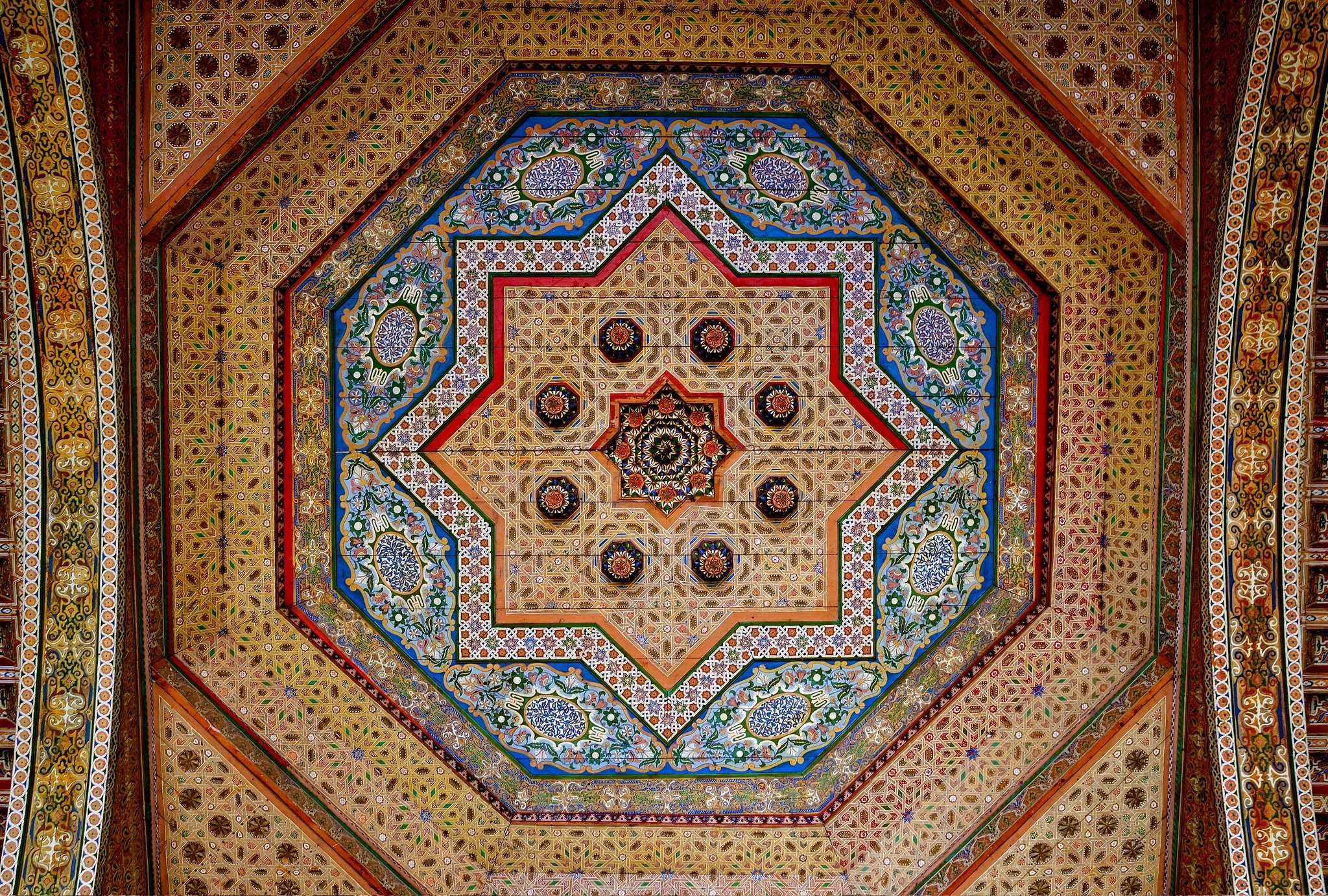
Architectural Innovation Meets Moroccan Tradition
Bahia Palace Marrakech perfectly captures the essence of Islamic and Moroccan architectural style. The building spans eight hectares and contains 150 rooms, though only a portion is open to the public. Each room showcases different elements of traditional Moroccan design:
- Zellige tilework: Those intricate geometric patterns you see everywhere? They're all hand-cut and placed by master craftsmen
- Carved cedarwood: The painted and carved cedar details are simply breathtaking
- Stucco work: The carved plaster decorations are so detailed they look like lace
- Traditional courtyards: Each opens onto beautiful gardens with orange trees and fountains
The Mystery of the Name
Here's a fun fact that always comes up during my visits: there are actually two theories about why it's called "Bahia," which means "brilliance" or "beautiful" in Arabic. Some say it's named after the architectural beauty of the palace itself. Others claim it was named after one of the vizier's favorite wives. Personally, I think it could be both—the palace is certainly brilliant, and if I were building a palace, I'd probably name it after someone I loved too!
Practical Information for Your Visit
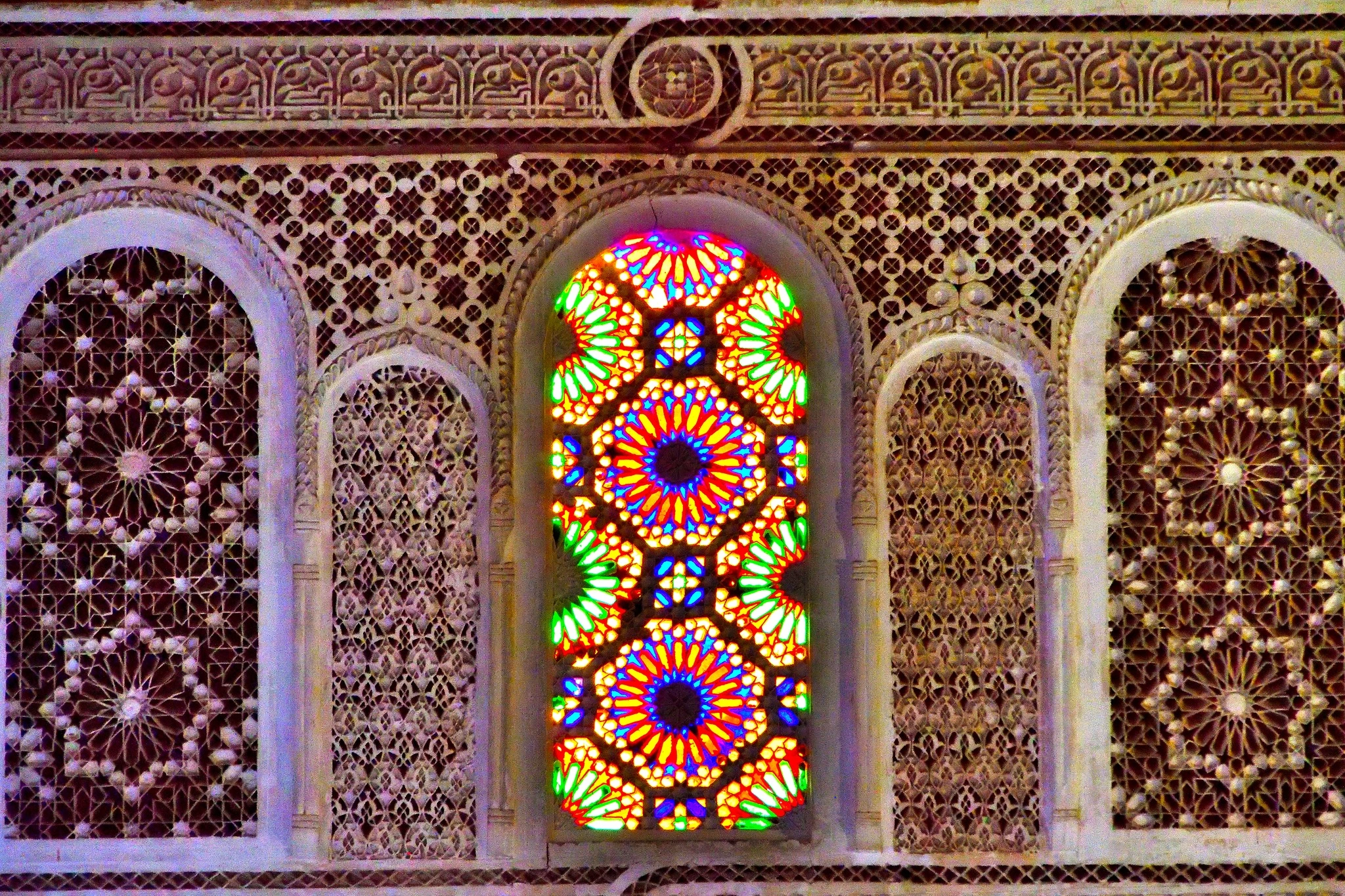
Getting There and Around
Bahia Palace Marrakech is located about 900 meters southeast of Jemaa el-Fnaa, making it easily walkable from the main square. From Jemaa el-Fnaa, just take Rue Riad Zitoun el Jdid (you'll see it on the corner near the Marrakchi restaurant), and you'll find the palace straight ahead.
The walk is pleasant, and you'll pass through some lovely parts of the medina. I always recommend taking your time to explore the streets around the palace—you'll find some hidden gems and local shops that most tourists miss.
Opening Hours and Tickets
- Opening Hours: Daily from 8:00 AM to 5:00 PM
- Entrance Fee: 70 dirhams per person (about $7.50)
- Best Time to Visit: Early morning or late afternoon for the best lighting and fewer crowds
Pro tip from my experience: if you visit around 3:00 PM, the afternoon sun creates the most incredible light show through those stained-glass windows. It's absolutely magical for photography!
Making the Most of Your Visit
Since all the rooms are empty (remember that post-death ransacking?), I highly recommend either hiring a guide or doing some research beforehand. The architecture tells an incredible story, but without context, you might miss some of the fascinating details.
The palace sometimes hosts cultural events, including exhibitions during the Marrakech Biennale. If you're lucky enough to visit during one of these events, you'll get to see the spaces used as they were intended—filled with art and life.
Nearby Attractions to Combine Your Visit
One of the great things about Bahia Palace Marrakech is its location in the heart of the medina. You can easily combine your visit with other incredible sites:
- Saadian Tombs (766 meters away): Another stunning example of Moroccan craftsmanship
- El Badi Palace (480 meters away): The ruins of what was once an even grander palace
- Dar Si Said (248 meters away): Now a museum showcasing Moroccan arts and crafts
- The Souks (734 meters away): Perfect for some shopping and mint tea
I usually recommend starting with the Bahia Palace in the morning, then wandering through the souks for lunch and mint tea, and finishing at the Saadian Tombs in the afternoon. It makes for a perfect day exploring Marrakech's historical treasures.
My Personal Recommendations
After countless visits to Bahia Palace Marrakech, here are my insider tips:
Bring a good camera: The geometric patterns and light play make for incredible photos. Just remember to be respectful of other visitors when taking pictures.
Wear comfortable shoes: You'll be doing a lot of walking on marble and tile floors. The surfaces can be slippery, especially if it's been cleaned recently.
Visit multiple times if possible: I've been dozens of times, and I still discover new details in the plasterwork and tile patterns. Each visit reveals something new.
Don't rush: This isn't a place to hurry through. Find a quiet corner in one of the courtyards and just sit for a while. The peace and beauty of the place really sink in when you slow down.
A Living Piece of History
What I love most about the Bahia Palace is how it represents the dreams and ambitions of people who lived over a century ago. Si Moussa, the former slave who built this palace, wanted to create something magnificent—and he succeeded beyond imagination.
Today, as I walk through these rooms and courtyards, I think about all the lives that were lived here. The political intrigue, the family gatherings, the quiet moments in the gardens—all of it has left an imprint on this place.
The fact that Bahia Palace Marrakech is now preserved as a cultural icon and open to visitors like us is pretty amazing. It's not just a tourist attraction; it's a bridge between Morocco's past and present.
Frequently Asked Questions About Bahia Palace Marrakech
A: I'd recommend allowing 1.5 to 2 hours for a thorough visit. This gives you time to explore all the main areas and really appreciate the architectural details without feeling rushed.
A: Yes, photography is generally allowed for personal use. However, be respectful of other visitors and avoid using flash, which can damage the delicate artwork and disturb other guests.
A: Absolutely! Kids often love the palace because it feels like a fairy tale setting. Just keep an eye on them around the fountains and marble floors, which can be slippery.
A: The palace has several courtyards and rooms at ground level, but there are some stairs and uneven surfaces. Some areas may be challenging for wheelchair users, though the main courtyards are generally accessible.
A: Bahia Palace is beautifully preserved with intact decoration, while El Badi Palace is essentially impressive ruins. Both are worth visiting, but Bahia gives you a better sense of how these palaces looked in their heyday.
A: While not essential, a good guide can really enhance your visit by explaining the historical context and pointing out architectural details you might miss. The palace is mostly empty, so the stories behind the rooms add a lot of value.
Have you visited the Bahia Palace? I'd love to hear about your experience! What was the moment that took your breath away? And if you haven't been yet, what are you most excited to see? Drop a comment below and let's chat about this incredible piece of Moroccan history.
Planning your trip to Marrakech? Check out our other guides to make the most of your visit to the Red City!
